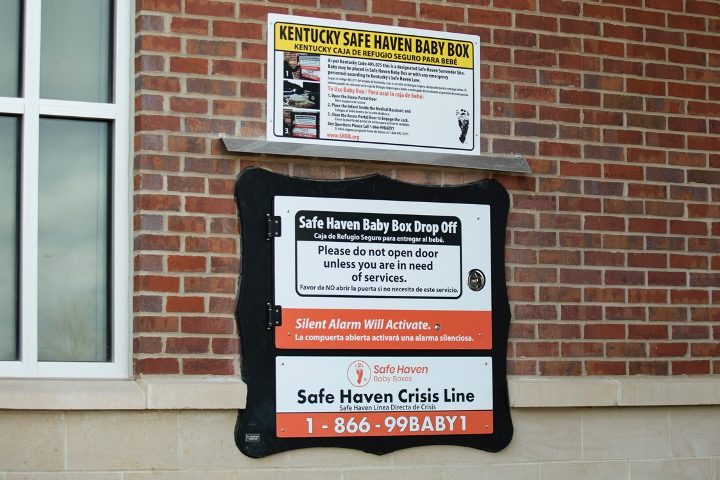
Since the Supreme Court overturned Roe v. Wade last year, removing federal protections for abortion, media have come unglued over what they call “extra births” — otherwise known as “lives saved” by laws that restrict abortion in pro-life states.
The Atlantic primed us for this narrative last December when it published the headline: “We are Not Prepared for the Coming Surge of Babies.” It alleged that pro-life states are “some of the worst for infant and maternal health.”
Indeed, last year, Mississippi’s Department of Child Protective Services Commissioner Andrea Sanders testified before the state Senate that her agency was not ready for an additional estimated 5,000 annual births.
And this June, The Journal of the American Medical Association, or JAMA, published research targeting Texas, which, like Mississippi, bans most abortions with very limited exceptions. The JAMA analysis suggests that in the year since the Texas law took effect, nearly 9,800 children have been saved by it. Of course, the authors define this number as “people forced to carry pregnancies to term, thereby increasing births,” as if it were bad news.
Indeed, the mainstream narrative demotes babies from the status of priceless human beings to troublesome economic burdens, and ignores the more than 3,000 pregnancy resource centers nationwide. Also known as crisis pregnancy centers, they are community-based, not-for-profit organizations established to provide care and resources for both “immediate and ongoing needs related to unexpected pregnancy,” according to the Lozier Institute.
The pro-death narrative also ignores the reality that every state has “Safe Haven” laws. These laws protect from persecution people who want to relinquish a newborn baby within a specific time after birth. Rules vary from state to state, but in general they allow a parent or legal guardian to walk into a designated Safe Haven location (such as a fire station or hospital) and turn an unharmed newborn over to a staff member. Under these conditions, the adult will not face charges of abandonment, neglect, or child endangerment.
The National Safe Haven Alliance reports that these laws have saved more than 4,000 lives since 1999, and the group offers a 24-hour hotline for those who need further help.
Safe Haven laws do not protect people who abandon children on the doorstep, so to speak, just because they don’t want to interact with anyone. Nevertheless, abandonment still happens, and for that reason, Monica Kelsey founded the nonprofit Safe Haven Baby Boxes, after learning that she herself was abandoned as an infant. The boxes take face-to-face interaction out of the surrender process and protect the mother’s anonymity.
Here is Kelsey, explaining how the system works:
When the mom walks up to one of our Safe Haven Baby Boxes, and she needs to utilize this resource that we have available for her, she’s gonna walk directly up to the box, she’s going to pull the little handle, she’s going to open up the door. As soon as this door is opened up, one of the alarms is already going off. It is a silent alarm that Mom will not hear. When she places Baby inside the box, another alarm goes off that she will not hear. When she shuts the door, she won’t be able to re-open the door. The door actually locks once Baby is placed inside. The baby can only be retrieved from the inside of the fire station or, in this case, the inside of the hospital.
Inside you’ll see a green light that is always green if there is no baby in our box. Once there’s a baby placed in our box, you’ll see a green, plus a yellow-orangish, because the beam from across has been broken. After Mom places her baby in one of our Safe Haven Baby Boxes, one of the staff or the EMTs or the paramedics or the nurses will come down to the Baby Box. They’re going to open the inside door. They’re going to grab the bassinette, and they’re going to head for the emergency room.
Last week, Kentucky’s ABC News affiliate WBKO reported that the second newborn within the past six months was surrendered to the same Safe Haven Baby Box at the Bowling Green Fire Department. The infant is healthy and is the third to be surrendered to a Baby Box in the state this year — the thirteenth nationally.
One of those was a little girl placed in Florida’s only Safe Haven Baby Box — at a fire station in Ocala — on January 2. The firefighter who retrieved her is now her proud father. He told his story to NBC News:
After finding her, he took the baby to the emergency room with a note pinned to her blanket. It told the staff that he and his wife wanted to adopt her. (They were already registered to adopt in the state.) Two days later, they took her home from the hospital, and in April, the adoption was finalized. They’ve concealed their last name in news reports for privacy reasons, but Vincent and Katy want their story told so Zoey’s birth mother knows how grateful they are and that her daughter is safe and loved.
There are 153 Safe Haven Baby Boxes across the country, and Kelsey says they have helped save more than 130 children since the first was installed in 2016.
However, not everyone is excited about these boxes. A group called Stop Baby Boxes Now! argues that they deny the rights of the non-surrendering parent, create at-risk adoptions, and potentially hide crimes such as rape and incest.
There is also grave concern that the anonymity of these surrenders could add to the problem of child trafficking. Writing in opposition to an Indiana state bill authorizing Baby Boxes and absenting them from stricter rules that apply to traditional safe-haven surrenders, attorney Gregory Luce points out that
adoption is unequivocally a multi-billion dollar industry that prizes infants above all other children for placement. Agencies charge upwards of $50,000 or more for an infant adoption. For these reasons, corruption in adoption has always been an issue, whether in cutting regulatory corners, paying facilitators or middlemen for placements or tips, or ignoring basic protections for vulnerable parents and their children.
He says the Indiana bill “creates a genuine recipe for increased adoption corruption in the state” and is “one of the worst child welfare bills I have seen in some time.”




